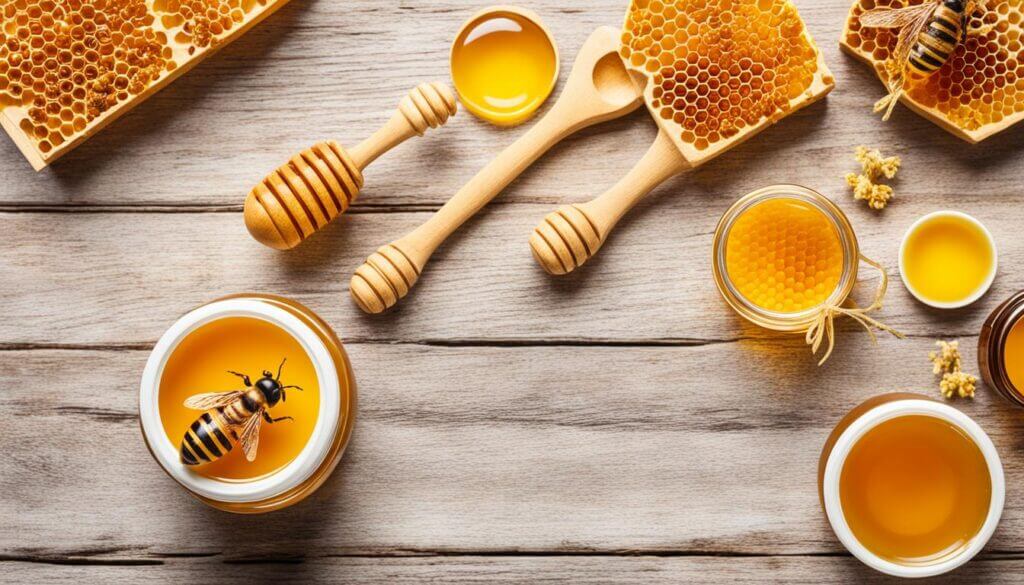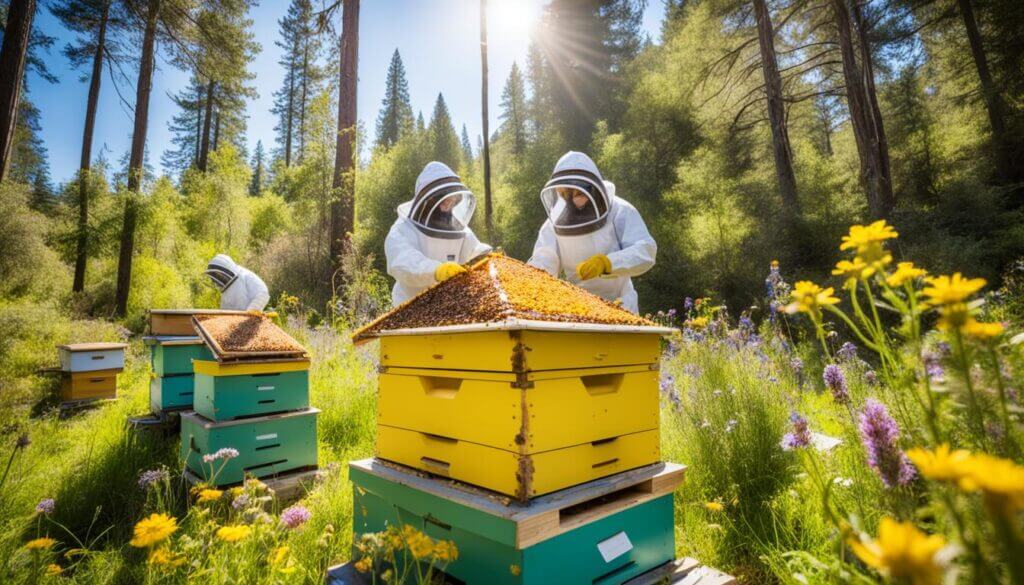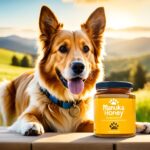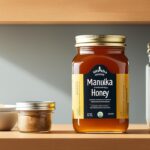Manuka Honey has created a buzz in wellness circles, promised not only to sweeten your day but to bring with it a host of health benefits. The catch? Its market is fraught with fakes and sub-par syrups. So, how does one navigate the manifold world of Manuka to ensure a safe purchase of the real deal? This is no mere impulse buy; it requires a discerning eye and a touch of insider knowledge. This Manuka Honey buying guide will arm you with essential tips on how to buy Manuka Honey both online and in-store, avoiding the pitfalls and ensuring you bring home a jar that’s truly worth its golden hue.
Understanding the intricacies of Manuka Honey is key. With this guide, you’ll unpack the labels, learn the significance of UMF and MGO ratings, and discover avenues to purchase Manuka Honey safely. Sooner than you know, you’ll be well on your way to making an informed decision, ensuring the best value, and securing the genuine taste of wellness endowed by nature.
Understanding the Unique Qualities of Manuka Honey
When exploring the burgeoning world of natural health products, one name often surfaces with a revered whisper: Manuka Honey. This extraordinary substance, derived from the nectar of the Manuka bush native to New Zealand, stands apart from its peers due to a myriad of defining Manuka Honey characteristics. At its core, what is Manuka Honey? It’s a special type of honey renowned for its potent antibacterial and anti-inflammatory properties, highly sought after for both its taste and therapeutic benefits.
Numerous studies have delved into the Manuka Honey health benefits, lauding its efficacy in treating wounds, soothing irritated throats, aiding digestion, and serving as a catalyst to general well-being. Notably, Manuka Honey contains an elevated level of dietary methylglyoxal, which is believed to be responsible for its robust antibacterial effects. These characteristics are not present in conventional honeys, setting Manuka apart as a premium health supplement.
In understanding Manuka Honey’s unique attributes, one must acknowledge the rating systems that gauge its potency: UMF (Unique Manuka Factor) and MGO (Methylglyoxal). These ratings help consumers discern the antibacterial strength of the honey they are purchasing. Essentially, a higher UMF or MGO rating signals a higher level of efficacy in terms of antibacterial activity.
- UMF Rating: A reflection of the honey’s overall antibacterial properties, including its non-peroxide activity, MGO content, and a distinctive compound called Leptosperin.
- MGO Rating: Specifically measures the methylglyoxal concentration, a compound directly correlated to antibacterial strength.
When considering Manuka Honey in any wellness routine, it’s crucial to understand the science behind its use and the specifics that dictate its premium nature. Whether you’re new to Manuka Honey or a seasoned enthusiast, appreciating its exceptional qualities is the key to harnessing its offerings for your health.
Benefits of Manuka Honey for Health and Wellness
Deep from the heart of New Zealand’s lush landscapes, Manuka Honey has grown from a traditional remedy to a modern-day marvel in natural medicine. With its impressive range of benefits, this honey is not only a sweet treat but also a significant contributor to health and wellness practices around the globe.
Used for centuries by the Maori people for its therapeutic properties, Manuka Honey is now extensively researched and recognized for its unique ability to address various health concerns. Its uses extend far beyond the kitchen, acting as a natural medicine and essential component in numerous natural remedies.
Among its many applications, Manuka Honey is known to support digestive health, offering relief for issues like indigestion and gastritis. Its natural antibacterial properties help in balancing intestinal bacteria, an essential aspect for a healthy digestive system.

When it comes to skin care, Manuka Honey shines as a natural remedy for a variety of conditions, including eczema and acne. Its anti-inflammatory and healing properties soothe skin, while its antimicrobial qualities are especially beneficial in preventing infections.
Boosting the immune system is another hallmark among its many uses. Manuka Honey contains compounds that can stimulate immune responses, helping the body to fend off common colds and other ailments. Furthermore, for those seeking a natural approach to oral health, Manuka Honey’s ability to fight harmful oral bacteria makes it a valuable weapon against tooth decay and gingivitis.
The science behind Manuka Honey’s efficacy against antibiotic-resistant bacteria has intrigued researchers worldwide. Its potent compounds have been shown to fight even the most stubborn infections, positioning Manuka Honey as a powerful medicine in the fight against antibiotic resistance.
Here is a detailed classification of Manuka Honey’s health benefits:
- Digestive Health: Alleviates gastric discomfort and supports a balanced gut flora
- Skin Treatment: Accelerates the healing of cuts, burns, and skin infections
- Immune Booster: Enhances the body’s natural defense system
- Oral Hygiene: Acts against plaque-forming bacteria to improve oral health
- Wound Healing: Cultivates an environment adverse to bacterial growth, fostering natural healing
- Antibacterial Therapy: Combatant against multi-drug resistant organisms, offering a natural alternative to antibiotics
Embracing the wholesome qualities of Manuka Honey, individuals can integrate this natural product into their healthcare routines, not only as a preventive measure but as a complementary treatment alongside conventional medicine.
Whether incorporated into a morning tea or applied directly to the skin, Manuka Honey’s versatile applications make it an indispensable asset for naturally-oriented individuals seeking to enhance their well-being. As more people turn to holistic approaches, Manuka Honey stands out for its potent, scientifically-backed health benefits, reinforcing its role as a treasured substance in the domain of natural health remedies.
Exploring Price Points: Value vs. Quality
When it comes to Manuka Honey cost, potential buyers should navigate the market with a clear understanding of factors that impact price points. Discerning the difference between value and premium products is essential to making an informed purchase that balances both cost and quality.
The price spectrum of Manuka Honey is directly influenced by the UMF/MGO rating, which is a reflection of the honey’s potency. As the numbers go higher, so does the premium Manuka Honey price. However, it’s crucial to recognize that not all high-cost Manuka Honey guarantees a superior experience, nor does affordable Manuka Honey imply a subpar quality. It’s the precise matching of one’s needs and budget with the product specifications that yields the best value.
A wise approach for consumers is to compare products within their price range. Below, we provide a snapshot of how various Manuka Honey offerings stand up against each other in terms of cost and potency:
| UMF/MGO Rating | Size | Average Cost | Comments |
|---|---|---|---|
| 5+/83+ MGO | 250g | $25-$35 | Entry-level potency, suitable for daily use |
| 10+/263+ MGO | 250g | $40-$60 | Medium potency, good for therapeutic use |
| 15+/514+ MGO | 250g | $60-$80 | High potency, ideal for targeted health benefits |
| 20+/829+ MGO | 250g | $80-$120 | Very high potency, premium quality |
Beyond simply looking at the labels and price, consumers interested in the therapeutic effects of Manuka Honey should consider the UMF/MGO rating as a priority. Those seeking a more general health supplement might find the best balance of cost and quality in mid-range ratings. It is always recommended to choose reputable brands that offer transparency in their labeling and sourcing to ensure the authenticity of the product.
- Opt for mid-range UMF/MGO ratings for a balance of quality and affordability
- Verify brand reputation and product reviews to ensure authenticity
- Be cautious of deals that seem too good to be true, as they may indicate a counterfeit product
In the quest for affordable Manuka Honey, the key is to shop with a vigilant eye, armed with knowledge about the signs of genuine quality. By doing so, consumers can enjoy the benefits of Manuka Honey without falling prey to misleading marketing or excessive prices.
The Significance of UMF and MGO Ratings
When stepping into the world of Manuka Honey, the acronyms UMF and MGO are often part of the conversation. Gaining an UMF rating understanding and familiarizing oneself with MGO measurement is essential for those seeking to benefit from this unique natural product. The UMF rating is not just a measure of methylglyoxal but includes key markers of purity and quality that form the comprehensive Manuka Honey grading system.

UMF measures not only the MGO content but also the non-peroxide activity which refers to its antibacterial properties separate from those provided by hydrogen peroxide, which is found in all types of honey. Therefore, UMF provides a broader insight into the honey’s potency. In contrast, MGO rating focuses explicitly on the amount of methylglyoxal, one of the major contributors to the antibacterial strength of Manuka Honey.
To further clarify the correlation between the ratings and what they mean for consumers, consider the table below:
| UMF Rating | MGO Content | Use |
|---|---|---|
| UMF 5+ | 83 mg/kg | Culinary purposes |
| UMF 10+ | 263 mg/kg | General wellness |
| UMF 15+ | 514 mg/kg | Therapeutic use |
| UMF 20+ | 829 mg/kg | High-level antibacterial activity |
While both UMF and MGO are invaluable for gauging Manuka Honey’s efficacy, it is wise to rely on the UMF rating for a comprehensive overview of the product’s therapeutic potential. Consumers can use this knowledge to select a Manuka Honey that aligns with their health and wellness goals, whether it be for daily health maintenance or for more targeted therapeutic needs.
Online Shopping: Finding Reputable Vendors
As discerning buyers look to buy Manuka Honey online safely, the importance of purchasing from trusted Manuka Honey suppliers cannot be overstated. The ease of online shopping is accompanied by the risk of encountering counterfeit products, which makes it essential to recognize reputable Manuka Honey online stores. The following advice is designed to steer consumers in the right direction, ensuring they invest in genuine Manuka Honey through verified channels.
- Always check for authenticity seals and certifications on the vendor’s website, which show that their Manuka Honey meets stringent quality standards.
- Read customer reviews and testimonials, which can provide honest insights into the quality of the Manuka Honey and the reliability of the seller.
- Look for clear and transparent labeling of UMF or MGO ratings, as these are indicators of genuine Manuka Honey potency.
- Assess the transparency of the company’s supply chain, ensuring they provide traceable information from the beehive to the shelf.
- Verify whether the seller is an accredited member of industry-recognized associations such as the Unique Manuka Factor Honey Association (UMFHA) or the New Zealand government’s MPI standard.
Making informed decisions when looking to buy Manuka Honey online safely demands a certain level of vigilance. To assist consumers, here is a comparative table of characteristics one must look for while choosing the best online vendor for Manuka Honey:
| Feature | Description | Why It Matters |
|---|---|---|
| Certifications | Look for UMF, MGO, or MPI marks | They indicate that the honey has been independently verified for quality and purity. |
| Customer Reviews | Personal accounts of product experience | Provides insight into the product’s effectiveness and seller’s trustworthiness. |
| Transparency | Open information on sourcing and production | Contributes to buyer confidence in the ethical sourcing and quality of the product. |
| Label Clarity | Detailed product information on the label | Aids in verifying the authenticity of Manuka Honey and its source. |
| Member Associations | Company affiliation with industry organizations | Indicates an additional level of commitment to quality and industry standards. |
Finding reputable sources to buy Manuka Honey online safely is a significant step in securing the manifold health benefits it offers. Adhering to these guidelines will help consumers identify the best possible products and shop with confidence.
In-Store Shopping: Ensuring the Authenticity of Manuka Honey
When you’re standing in the aisle of a store, contemplating which jar of Manuka Honey to add to your cart, knowing how to verify Manuka Honey is essential. To aid in your quest for an authentic Manuka Honey purchase, there are several tangible indicators that you should be aware of. From the label to the retailer’s reputation, every detail counts in determining the authenticity of the product. Follow these tips to ensure that your Manuka Honey is as pure and potent as the bees intended.
- Check the label for UMF/MGO ratings to understand the potency and purity.
- Look for traceability codes that link back to the honey’s source.
- Ensure the label has certification marks from independent verifiers like UMFHA (Unique Manuka Factor Honey Association).
- Prefer to buy from reputable health food stores or established supermarkets that are known for carrying high-quality products.
Additionally, buying from genuine Manuka Honey retailers who specialize in natural and organic products can also lead to a better selection and higher assurance of product authenticity.

Let’s break down the key elements on a Manuka Honey label that you should be evaluating:
| Certifications | UMF/MGO Rating | Origin | Traceability |
|---|---|---|---|
| UMFHA, MPI | Varies (the higher, the better) | New Zealand or Australia | Unique batch number |
| Non-GMO, Organic | Check for lab-tested guarantee | Presence of the ‘Produced in NZ’ label | QR code or website for origin tracking |
Remember, doing your due diligence before buying can save you from the disappointment of a counterfeit product and ensure you reap the full health benefits of genuine Manuka Honey. By applying these tips, your next visit to the store can be a confident and successful one in securing the real golden nectar.
Labels and Certifications: What to Look For
When embarking on the journey of Manuka Honey label reading, the attention to detail can drastically influence the quality of your choice. A label is not just a sticker; it’s a gateway to understanding the precious jar of honey you’re considering. To aid in recognizing quality Manuka Honey, the focus should be on decipherable labels and esteemed certifications for Manuka Honey.
Here’s a guide to the most essential label elements and certifications to check before you add that jar to your cart:
- The UMF™ number: This indicates the Unique Manuka Factor, reflecting the antibacterial potency of the honey. Look for labels with a UMF™ rating of 10 or higher for therapeutic use.
- MGO level: Stands for the Methylglyoxal concentration, which should be at least 100mg/kg or more for genuine Manuka Honey.
- Authenticity indicators: Scan for the UMFHA (Unique Manuka Factor Honey Association) trademark, which assures quality and purity.
- Origin: Authentic Manuka Honey hails from New Zealand. Confirm the “Product of New Zealand” statement.
- Batch numbers: These ensure traceability back to the hive, so you know exactly where your honey comes from.
- Best Before Date: Quality Manuka Honey has a long shelf life, but this date is critical to guarantee freshness.
Apart from these, the MPI’s (Ministry for Primary Industries) ‘Manuka Honey Science Definition’ is pivotal.
| Certification | Description | Consumer Benefit |
|---|---|---|
| UMFHA License | Honey tested for quality markers and independent verification | Assurance of authenticity and strength |
| MPI Standard | Meets New Zealand government’s rigorous export quality standards | Purity and premium quality |
Keep these pointers in mind next time you go on a Manuka Honey treasure hunt. With an informed eye for labels and certifications, you can savor not only the taste but also the tranquility that comes with knowing you have invested in the best.
Sampling and Taste Tests: Getting Acquainted with Manuka Honey
An appreciation for the complex tasting Manuka Honey experience begins by exploring its unique flavor profile, which is heavily influenced by the landscape of New Zealand’s diverse ecosystems. Dipping into the world of Manuka Honey, enthusiasts can sample Manuka Honey varieties that resonate with earthy tones, herbaceous sparks, and the sweetness that only nature can provide.
Sourcing a small sample Manuka Honey assortment is a delightful way to embark on this culinary journey. Specialty food stores or online retailers often offer mini jars or tasting sets that feature different UMF (Unique Manuka Factor) levels. Discovering the distinct Manuka Honey flavor profile associated with these varying grades, from mild to intense, unveils a world rich in taste nuances.
Dedicated tasting Manuka Honey events present another avenue for curious palates. Such gatherings, typically held at health food stores or gourmet markets, offer guided tastings where one can learn directly from beekeepers or brand ambassadors about the diverse spectrum of Manuka Honey flavors.
For the home taste-tester, here is a simple guideline for detecting the layers of flavor found in high-quality Manuka Honey:
- Observe the honey’s color and texture.
- Inhale its fragrance, identifying any floral, woody, or rich caramel notes.
- Savor a spoonful, letting it coat your palate, and note the sweetness along with any herbaceous or mineral undertones.
- Consider the lasting impressions, whether they tend to aromatic wildflower fields or a more potent, earthy tang.
Compare these tasting notes:
| UMF Level | Flavor Characteristics | Suggested Pairings |
|---|---|---|
| UMF 5+ | Light, floral tones with a hint of fresh herbs | Cheeses or as a yogurt drizzle |
| UMF 10+ | Richer, more pronounced minerality with a creamy texture | Tea sweetener or on warm grains |
| UMF 15+ | Deep, complex bouquet with earthy and spicy notes | Glazes for meats or with hearty bread |
| UMF 20+ | Intense, bold flavor with a lingering finish | As a standalone delicacy or on top of desserts |
Joining the ranks of connoisseurs or simply indulging in an afternoon tasting, exploring the diverse offerings of Manuka Honey is a satisfying adventure for the senses and an enriching episode in anyone’s culinary exploration. Whether used for its health benefits or savored for its exceptional taste, the experience of discovering the world of Manuka Honey is as engaging as it is delicious.
Storage and Shelf Life: Preserving Manuka Honey’s Benefits
Proper storage is indispensable for maintaining Manuka Honey’s unique health properties and delectable taste. By adhering to appropriate storage conditions, we can extend its shelf life and maintain its quality. Ideally, Manuka Honey should be kept in a cool, dark place – a pantry or cabinet away from heat and light works perfectly. Ensure the container is tightly sealed to prevent moisture, which can lead to fermentation, and avoid refrigeration as it accelerates crystallization.
Manuka Honey’s shelf life is remarkably generous. When stored properly, it can remain stable for years without losing its potency. However, over time, you may notice crystallization – a natural process where glucose sugar separates and forms crystals. Though often mistaken as a sign of spoilage, crystallization actually preserves the honey’s flavor and quality. If your honey does crystallize, you can gently warm the jar in a hot water bath to re-liquefy it, being careful not to overheat the honey as high temperatures can degrade its enzymes and antioxidants.
To best retain the integrity and therapeutic properties of Manuka Honey, consider the following guidelines:
- Avoid direct sunlight, which can diminish its potency.
- Store at room temperature to minimize the risk of crystallization.
- Use dry, clean utensils when scooping out honey to prevent contamination.
- Keep the container properly sealed when not in use.
Understanding and implementing these storage techniques will ensure that your Manuka Honey remains a potent and pure complement to your wellness regimen. This way, you can savor not just the flavor but also the manifold health benefits that this extraordinary honey has to offer well beyond its purchase date.
Importance of Supporting Sustainable and Ethical Beekeeping
Embracing sustainable Manuka Honey production and ethical beekeeping practices is more than a trend; it’s a commitment to preserving the intricate balance of our ecosystem while procuring eco-friendly Manuka Honey. As a conscious consumer, supporting these methods can leave a positive footprint on the environment and contribute to a healthier bee population. Let’s explore how we can contribute to this noble cause.

Identifying brands that adhere to ethical standards involves looking for certain indicators of responsible practices. Below is a checklist to help shoppers recognize companies that are dedicated to sustainability:
- Transparency in sourcing: Companies should openly share where and how their Manuka Honey is harvested.
- Certifications: Look for certifications such as BioGro NZ or USDA Organic as evidence of organic and sustainable beekeeping.
- Conservation efforts: Brands that actively participate in environmental conservation signal a commitment to eco-friendly practices.
- Support for local communities: Ethical brands often engage in fair trade practices and support the communities involved in the production process.
Apart from personal research, various certifications and initiatives offer guidance for consumers looking to support eco-conscious Manuka Honey production:
| Initiative/Certification | Description | Impact on Sustainability |
|---|---|---|
| UMFHA Membership | Members of the Unique Manuka Factor Honey Association are required to meet strict sustainability standards. | Ensures responsible land stewardship and honey authenticity. |
| Carbon Neutral/Zero Carbon | Carbon-neutral certification indicates that the company offsets its carbon emissions to zero. | Reduces the carbon footprint associated with honey production. |
| Non-GMO Project Verified | Products with this verification are produced without genetically modified organisms. | Encourages natural beekeeping practices without synthetic interference. |
| Fair Trade Certified | This certification ensures fair working conditions and wages for farmers and harvesters. | Promotes social sustainability and community development. |
By supporting companies that incorporate sustainable and ethical practices into their Manuka Honey production, we promote a healthier planet and a viable future for beekeeping. Mindful purchasing is a powerful way to enact change and safeguard the precious natural resource that is Manuka Honey.
Buying Manuka Honey: Seasonal Considerations and Limited Harvests
Manuka Honey enthusiasts quickly learn that the best times for seasonal Manuka Honey buying are often fleeting. The unique Manuka bush blooms for just a few weeks each year, typically from December to January, with the honey harvested soon after. Seasonality not only heightens the allure of limited edition Manuka Honey but also has a direct impact on market availability and pricing.
During the brief window of Manuka blossoming, beekeepers work tirelessly to collect the precious nectar. Since the timing of the bloom can vary depending on the weather and other environmental variables, each season’s harvest is unpredictable. Thus, annual variations lead to the concept of exclusive Manuka Honey harvests, mirroring the fine wine industry where particular vintages are celebrated for their superior quality.
Comprehending the intricate balance of supply and demand for this rare product can enhance your purchasing strategy. Below is a table that outlines key factors affecting seasonal Manuka Honey buying:
| Factor | Influence on Seasonal Availability | Impact on Pricing |
|---|---|---|
| Bloom Period Duration | Shorter bloom periods can lead to a decreased honey yield. | Scarce supplies may drive up prices due to heightened demand. |
| Weather Conditions | Adverse weather can reduce the number of bees collecting nectar and the quality of honey. | Potential increase in price for undiminished quality honey from unaffected regions. |
| Environmental Factors | Ecological balance or disruption plays a significant role in the health of Manuka bushes. | Stable environments tend to maintain more predictable pricing, while disruption can lead to price fluctuations. |
The allure of securing a jar from a limited edition Manuka Honey batch drives many enthusiasts to stay alert to the timing of releases. Not only does this ensure access to some of the most exclusive batches, but it also enables purchasers to be part of a unique natural phenomenon, with each jar representing a distinct moment in time and place.
- Check with suppliers for information on upcoming harvests and release dates.
- Stay updated with news from leading Manuka Honey brands about limited editions.
- Consider pre-ordering options to guarantee access to the season’s batch.
To participate in the selective world of seasonal Manuka Honey buying, it’s essential to act quickly and purchase decisively when the opportunity arises. Whether for its health properties or as a culinary delight, each jar of Manuka Honey is a treasure trove of natural goodness, bound by time and crafted by nature.
Conclusion
Embarking on the journey to purchase Manuka Honey requires more than just an appetite for its rich, distinct flavor—it’s an investment in your health and well-being. Our final thoughts on Manuka Honey underscore the need for vigilance and knowledge. As we’ve explored, the exceptional qualities of Manuka Honey—its antibacterial prowess, health benefits, and the unique UMF and MGO grading systems provide a framework for you, the consumer, to make educated decisions. Emphasizing the importance of authenticity, we’ve addressed the significance of labels, certifications, and reputable vendors whether shopping online or in-store.
A highlighted summary of Manuka Honey purchasing advices entails understanding the potency of the honey through reliable UMF and MGO ratings, recognizing ethical beekeeping practices, and being mindful of seasonality and its impact on availability. The vast spectrum of price points indicates that while quality often correlates with cost, there are options available that maintain the integrity of Manuka Honey without breaking the bank.
In conclusion, taking these insights to heart equips you with the ability to navigate the market confidently, ensuring that the Manuka Honey gracing your pantry is genuine, ethically sourced, and of the utmost quality. The golden elixir awaits, promising not just sweet indulgence but a bounty of health benefits. With the right knowledge at your disposal, you are poised to enjoy all that this liquid gold has to offer.




